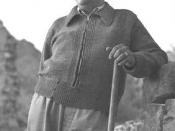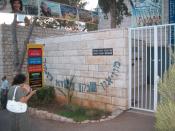Marcel Janco, a contemporary of Pablo Picasso, was an influential artist of the Dada period of 1916 to 1920. Dada stood by its many ideas and values. Dada was about deliberate irrationality, anarchy, cynicism and the rejection of the law.
Marcel Janco was born on May 24th, 1895 in the town of Bucharest, Rumania and created the Dada movement with fellow artists such as his good friend Tristan Tzara, in 1916. To Janco and his Dada artists, their creation of Dada contained the premise for a new way of living expressed through the poetical value of its attitudes and actions.
Dada brought about new ways to think about things, to look at things- ways to interpret meanings, attitudes and actions. Marcel Janco demonstrated these ideas and values behind Dada through the artworks he created.
Janco played an influential role in the art style of Dada becoming such an accepted and well-known creation of art.
Dada was established in Zurich, Switzerland by a group of exiled poets, painters and philosophers who were against war, aggression and the changing world culture. Zurich was chosen as Switzerland maintained it neutrality throughout all conflict. As the group was against war and suffering, the felt that Zurich would be a perfect place to establish their artistic revolution.
Among Marcel Janco's many artworks he created during the Dada movement, was Goat. Marcel Janco was widely influenced from the recollections by soldiers in World War I. Goat is an example of this- it was originally a brighter artwork but a second, darker edition was created. It showed the effects of the war on humanity and the state of mind that it brought about on many people. Janco has used very dark and very little contrasting colours. He uses the contrast to make the darkness...



Not bad
Covers the topic quite nicely i give it a smiley face thing
1 out of 1 people found this comment useful.